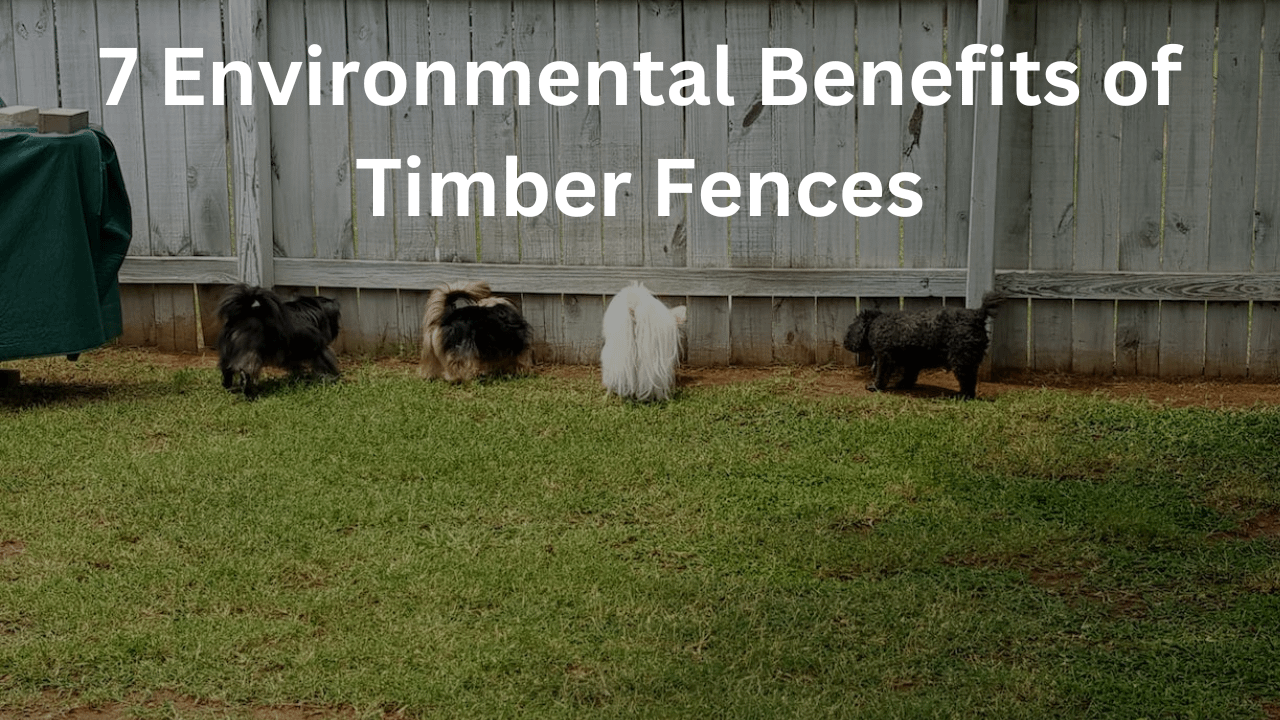In an era where environmental sustainability is a growing concern, the choice of materials for home improvement projects plays a significant role in reducing our carbon footprint. Timber fences offer a compelling solution that not only enhances the aesthetic appeal of outdoor spaces but also provides numerous environmental benefits. In this blog post, we’ll explore why wood is a sustainable choice for fencing and delve into the environmental advantages it offers.
1.) Renewable Resource
Timber is a renewable resource, meaning it is sourced from forests that are managed sustainably. Unlike non-renewable materials such as metal or concrete, which deplete finite resources, timber can be harvested and replenished through responsible forestry practices.
2.) Carbon Sequestration
Trees absorb carbon dioxide from the atmosphere during photosynthesis, storing carbon within their fibers. When timber is used in construction, such as for fencing, it continues to sequester carbon, effectively locking it away from the atmosphere. This helps mitigate climate change by reducing greenhouse gas emissions.
3.) Low Embodied Energy
Compared to other building materials such as steel or concrete, timber has a lower embodied energy, meaning it requires less energy to manufacture and transport. This results in lower carbon emissions associated with the production process, further reducing the environmental impact of timber fencing.
4.) Biodegradability
At the end of its lifespan, timber fencing can be easily recycled or disposed of in an environmentally friendly manner. Unlike plastic or metal fencing materials, which may take centuries to decompose in landfills, wood naturally breaks down over time, returning nutrients to the soil without causing long-term harm to the environment.
5.) Sustainable Forestry Practices
Many timber suppliers adhere to strict forestry management standards certified by organizations such as the Forest Stewardship Council (FSC) or the Programme for the Endorsement of Forest Certification (PEFC). These certifications ensure that timber is sourced from responsibly managed forests, where trees are harvested in a manner that preserves biodiversity and ecosystem health.
6.) Local Sourcing
Opting for locally sourced timber reduces the environmental impact associated with transportation. By choosing timber fencing materials sourced from nearby forests or lumber mills, homeowners can minimize carbon emissions and support local economies.
7.) Natural Insulation
Timber fencing provides natural insulation, helping to regulate temperature and reduce energy consumption. By creating a barrier against wind and noise, timber fences can contribute to a more comfortable outdoor environment while reducing the need for artificial heating and cooling.
Conclusion
As concerns about environmental sustainability continue to grow, the choice of building materials becomes increasingly important. Timber fences offer a sustainable solution that combines aesthetic appeal with environmental benefits. From renewable sourcing and carbon sequestration to low embodied energy and biodegradability, wood fencing stands out as a eco-friendly choice for homeowners looking to enhance their outdoor spaces while minimizing their environmental impact. By opting for timber fences, individuals can contribute to a greener future while enjoying the natural beauty and functionality of wood in their surroundings.




